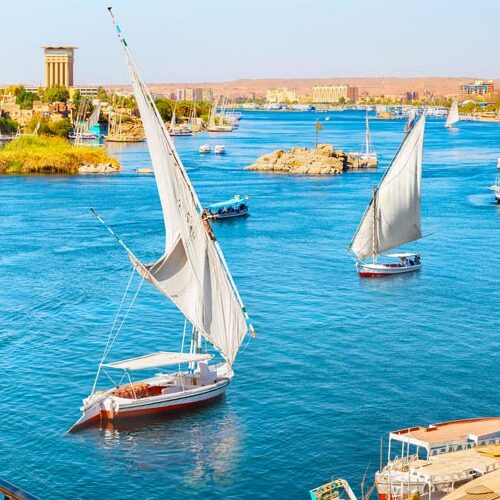No other nation in the world says ‘Welcome’ as often as the Egyptians, and every time, they mean it. While the ancient civilization of Egypt continues to amaze, contemporary Egyptians are equally remarkable.
The Philae Temple
The Philae Temple in Aswan
The Temple of Philae, a gem of ancient Egyptian architecture and mythology, is located on Agilika Island near Aswan. This temple, dedicated to the goddess Isis, was originally on Philae Island but was relocated to Agilika in the 1960s to save it from the floodwaters caused by the construction of the Aswan High Dam.
Key Features of the Philae Temple:
- Relocation and Preservation: Due to the Aswan High Dam’s construction, the temples on Philae Island were at risk of submersion. UNESCO spearheaded a massive engineering project to relocate these structures to the nearby Agilika Island. This move preserved the temple’s original orientation and architectural integrity.
- Architectural Significance: The most ancient monument on Philae is the Nectanebo I Kiosk from Dynasty XXX. The temple complex primarily comprises Roman and Ptolemaic structures, reshaped to mirror the classic appearance of Philae Island.
- Historical Legends: Philae is steeped in legend, particularly surrounding the story of Isis finding the heart of Osiris, her murdered husband, on the island. This mythological significance made Philae a vital center for the cults of Isis and Hathor during Roman times.
- Cultural Attractions: The Sound and Light Show at Philae, held every evening, is a popular tourist attraction. It brings to life the legends associated with the temple against the backdrop of its floodlit monuments.
- Structural Details: The temple complex includes:The Nectanebo I Kiosk, believed to be the oldest surviving structure.
- The first pylon constructed by Ptolemy XII, featuring classic Egyptian-style decorations.
- The Hypostyle Hall leading to the main sanctuary, adorned with reliefs depicting the life and death of Osiris.
- The smaller Hathor Temple, showcasing Ptolemaic columns and various reliefs.
- The Trajan Kiosk, an iconic part of Philae known for its open structure and absence of a roof.
- Adjacent Historical Sites: Nearby islands like Konosso and Biga have their own historical significance related to the Osiris myth and the cult practices of ancient Egypt.
- Visitor Experience: The temple can be accessed by boat, offering a unique approach to this historical site. The overall experience is enriched by the scenic Nile River and the surrounding landscape.
In summary, the Temple of Philae is not only an architectural marvel but also a cultural and historical treasure, representing the rich legacy of ancient Egyptian mythology and religion. Its relocation and preservation are testaments to global efforts in protecting and celebrating world heritage.
Created On March 18, 2020
Updated On Aug , 2024
ASWANTravel Guide


